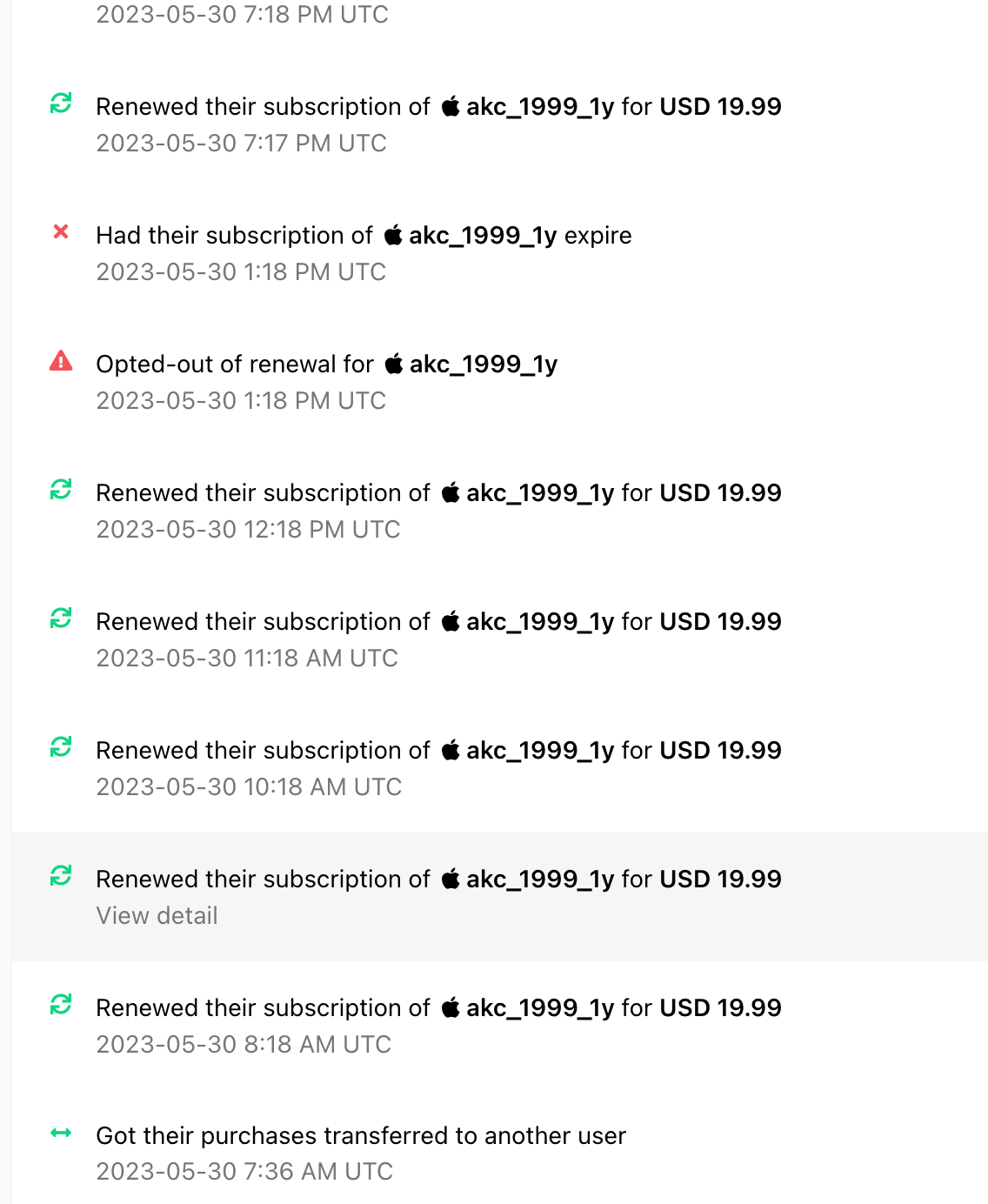Hi all,
When testing monthly subscriptions for an IOS app in Testflight, I have created 30+ test users via gmail accounts. Each time I have a new user create an account on my app and subscribe, the Sandbox data in Revenuecat switches all the Customer info to that new ID (uid in Firebase), including backdating activity. Is that expected behavior, or should each new account (aka new firebase UID) have it’s own identity in the Revenuecat Sandbox, so I can accurately test?
Here is some example history for the current user. Does this look normal? I did have the user logout of their app for less than 24 hours but they did not “opt out” of renewal.
Also see the transfer of the subscription. Is that how the testing works?





